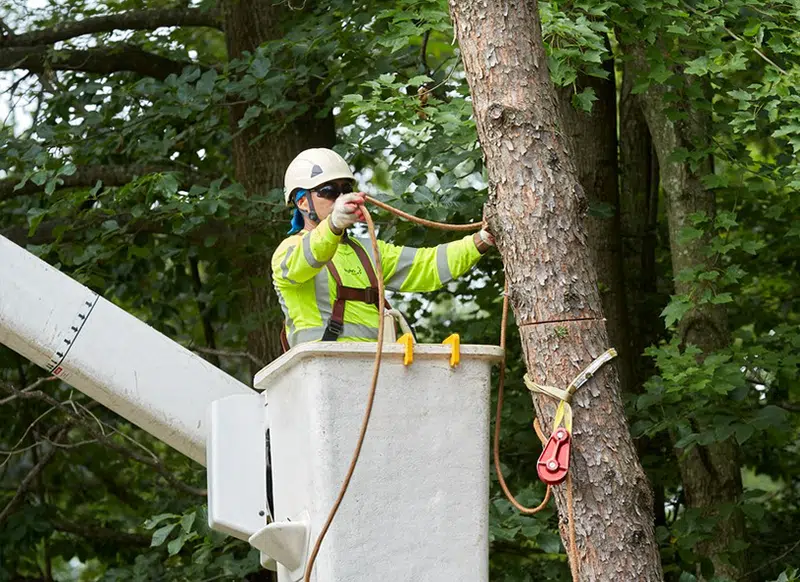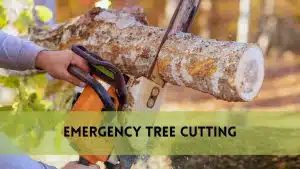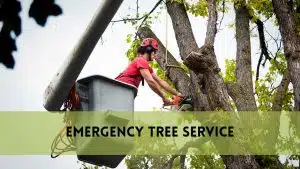Palm trees are iconic symbols of tropical beauty and elegance. Their swaying fronds and towering presence can transform any landscape into a paradise. However, to maintain the health and aesthetic appeal of palm trees, regular trimming is essential. In this guide, we’ll delve into the art of palm tree trimming, exploring the step-by-step process, providing expert insights, and addressing common questions. Whether you’re a seasoned gardener or a first-time palm tree owner, this article will equip you with the knowledge you need to ensure the vitality and beauty of your palm trees.
Understanding the Importance of Trimming for Palm Tree Health
Regular trimming isn’t just about aesthetics; it’s crucial for the overall health of palm trees. When dead fronds accumulate, they create a haven for pests and can become a fire hazard. Trimmed trees are more resistant to diseases and pests.
Proper trimming enhances air circulation, allowing the center of the tree to receive more sunlight, which is essential for growth. Trimming also promotes the development of strong fronds, leading to a more robust and visually pleasing palm tree.
Identifying the Right Time for Trimming
Timing is crucial when it comes to palm tree trimming. The best time to trim a palm tree is during the dormant season, typically in late winter or early spring. This timing allows the tree to recover quickly as the growing season begins.
However, avoid trimming too much at once, as it can stress the tree. Aim to trim only dead or yellowing fronds, and never remove green, healthy fronds as they contribute to the tree’s vitality.
Necessary Tools for Palm Tree Trimming
Having the right tools is essential for effective palm tree trimming. Here are the tools you’ll need:
1. **Pruning shears**: For smaller fronds and minor trimming.
2. **Loppers**: Ideal for larger fronds that are out of reach.
3. **Pole saw**: Necessary for trimming higher fronds without climbing the tree.
4. **Safety gear**: Wear gloves, eye protection, and sturdy shoes for safety.
Step-by-Step Guide to Trim a Palm Tree
Follow these steps to trim your palm tree properly:
1. **Assess the tree**: Identify dead, yellowing, or diseased fronds that need removal.
2. **Safety first**: Put on your safety gear, including gloves and eye protection.
3. **Start at the bottom**: Begin by removing the dead fronds near the base of the tree.
4. **Trim evenly**: Work your way up the tree, trimming fronds at an even level to maintain symmetry.
5. **Avoid cutting too close**: Leave a small portion of the frond base to prevent damage to the trunk.
6. **Remove seed pods**: If your palm tree produces seed pods, remove them to conserve energy for growth.
5. Providing Post-Trim Care
After trimming your palm tree, there are a few care steps to follow:
1. **Apply wound dressing**: Use a tree wound dressing on large cuts to prevent disease.
2. **Fertilize**: Apply a balanced palm fertilizer to provide essential nutrients.
3. **Monitor for pests**: Keep an eye out for signs of pests and treat promptly if necessary.
Frequently Asked Questions (FAQs)
Q: How often should I trim my palm tree?
Palm trees typically need trimming once a year, usually during the dormant season. However, if you notice dead or yellowing fronds, it’s best to trim them as needed.
Q: Can I trim the fronds myself, or should I hire a professional?
While you can trim smaller fronds, it’s recommended to hire a professional for taller trees or when dealing with large, heavy fronds. Safety is crucial, and professionals have the right equipment and expertise.
Q: Is palm tree trimming expensive?
The cost of palm tree trimming varies depending on factors such as tree size, location, and the number of fronds that need trimming. It’s best to get quotes from local arborists for an accurate estimate.
Q: Will trimming harm my palm tree?
When done correctly, trimming is beneficial for palm trees. It improves their health and appearance. However, excessive or improper trimming can stress the tree. Stick to the recommended guidelines and avoid removing healthy fronds.
Q: Can I trim the palm tree during the summer?
It’s not ideal to trim palm trees during the summer, as this is the growing season. Trimming during this time can put stress on the tree. Stick to trimming during the dormant season for the best results.
Q: What should I do with the trimmed fronds?
Dispose of the trimmed fronds responsibly. Many local waste management services offer green waste pickup. Alternatively, you can use the fronds for mulch or compost if you have the means to do so.
Conclusion:
Trimming palm trees is a necessary and rewarding task that contributes to their health and visual appeal. By understanding the importance of trimming, identifying the right time, using the proper tools, and following a step-by-step guide, you can ensure your palm trees flourish. Regular trimming, along with post-trim care and vigilance, will help your palm trees thrive for years to come, adding natural beauty to your surroundings.




